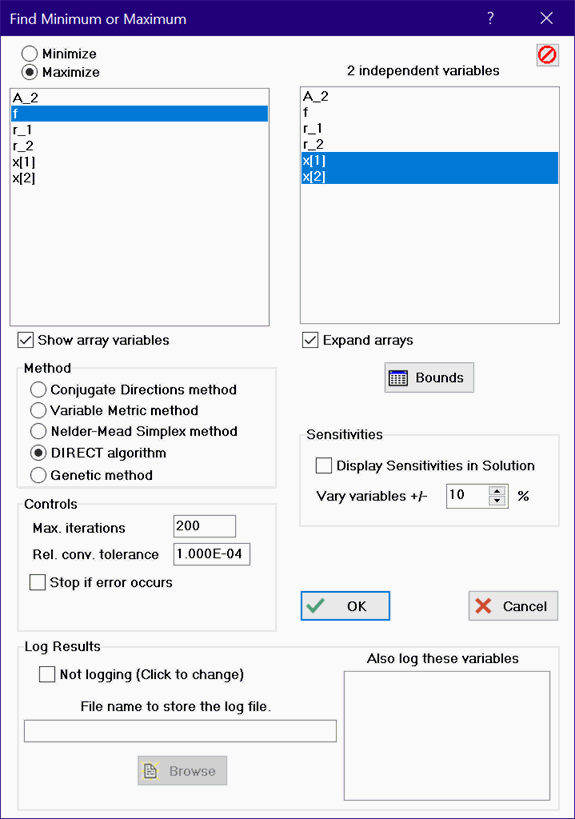
DIRECT Optimization Algorithm
The DIRECT Optimization Algorithm implements the original DIRECT algorithm developed by Jones et al. FORTRAN code and a user's manual prepared by J.M. Gablonsky for this optimization algorithm.
The Professional license of EES provides a choice of 5 optimization method for problems having two or more degrees of freedom. Of the algorithms, only the Genetic and the DIRECT algorithms are designed to locate a global optimum when local optima exist in the search region. Experience with the DIRECT algorithm shows that it is capable of finding a global optimum with many fewer function evaluations than the Genetic method. However, it is not as efficient as the Conjugate Directions, Variable Metric, or Nelder-Mead methods when local optima do not exist.

Max. function calls is the upper limit of the number of times EES will solve the equations while searching for the optimum.
Rel. conv. tolerance is a stopping criterion referred to as volper by Gablonsky. The smaller this number, the more accurate the optimum will be and the more function evaluations it will require to locate the optimum.
EES will also terminate the search for the optimum if an improved estimate of the optimum is not located in (Max. function calls / 5) function evaluations.
Stop if error occurs will cause the optimization to stop if an error is encountered during the calculations. In most cases with a well-formulated problem, it is best to leave this option unchecked so that EES can continue to look for an optimum solution.
References:
D.R. Jones, C.D. Perttunen, and B.E. Stuckmann, Lipschitzian optimization without the lipschitz constant, Journal of Optimization Theory and Applications, 79:157, 1993.
J.M. Gablonsky, DIRECT Version 2.0 User Guide, North Carolina State University, Department of Mathematics, Center for Research in Scientific Computation, Box 8205, Raleigh, NC 27695-8205, April 18, 2001, jmgablon@unity.ncsu.edu